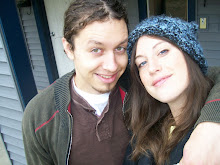In an ironic twist of events, Jacob and I headed out of Hokkaido and down to Hiroshima for a weekend getaway from work, snow, and the tiring nuclear-disaster-hype that we've been bombarded with ever since the earthquake and tsunami:

Thanks to its unfortunate status as being the first city in the world to meet an unthinkable fate as a result of an atomic bomb dropped by the Americans during WWII, Hiroshima is one of those cities in Japan that needs no introduction to the rest of the world
The closest surviving building to the epicenter of the a-bomb was the Hiroshima Prefectural Industrial Promotion Hall, now known as the A-bomb Dome or Peace Dome:
The building and surrounding area is now a part of the Hiroshima Peace Memorial Park, a touching area filled with memorials and reminders of what happened here, as well as sculptures and tributes to the city's never-tiring goal of world peace. The park was created on an island in an open field that was created by the bomb...previously, that area had been filled with homes, schools, shops, and lots of people.
Every year, thousands of colorful paper cranes are left at the Children's' Memorial (dedicated to the thousands of children who instantly had their young lives snuffed out) in memory of Sadako Sadaki. Sadako was only 2 when the bomb was dropped...she later developed radiation-induced leukemia and died when she was 12. Before she died, she worked to fold 1,000 paper cranes in hope that her wish for a cure would be granted. Today, students from all over the world make and send chains of beautiful paper cranes in support of Sadako and world peace:
A view of the A-bomb Dome can be seen through the archway covering the memorial cenotaph, which contains a book of the names of over 70,000 victims killed by the bomb:
The mound behind these markers consists of the ashes of close to 70,000 a-bomb victims, most of whom were never identified:
The main complex at the park is the Hiroshima Peace Memorial Museum, a heartbreaking but important look at that terrible day, the events leading up to it, and the years and years of after-effects:
8:15 in the morning was the time that Hiroshima was forever changed:
Here's a model (constructed based off of ariel photographs) of downtown Hiroshima as it looked before the bomb was dropped. You can see the green-roofed Prefectural Industrial Promotion Hall (A-bomb dome):

And here is a model of how it looked afterwards. The red marker and white sign is the location of the bomb's epicenter. Eerily, it reminded us of some of the before-and-after arial images we've been seeing of the tsunami hit areas in Tohoku:

Photo taken by the U.S. Army so that they could record the "effectiveness" of their a-bomb project:

3-year old victim's tricycle:
Anyone who still believes in the importance of nuclear weapon, and mass destructiveness from war in general, needs to visit this museum. Actually, I would say that anyone who comes to Japan should include a stop to this museum on their itinerary, sad as it is to face.
As if the museum wasn't depressing enough though, Jacob's wallet was also lost, prompting a trip to the police station as well (side-note: in true Japanese fashion, someone turned it in later that night):
To help lift our spirits a bit, we headed out to have some okonomiyaki (kind of like a fried Japanese pancake). Hiroshima has their own style of okonomiyaki from the rest of country and, topped with some local AMAZING oysters, it was a feast indeed!



Was hoping we'd get in on some good cherry-blossom viewing, but branches were either bare or the blooms were juuuuuuust coming out. Still pretty nevertheless:

Hiroshima Castle, reconstructed from the original that was completely destroyed from the bomb...I'm sure this place is gorgeous during the fall:
After Hiroshima, we took the train to nearby Miyajima for the night...to be continuted in part II...


















No comments:
Post a Comment